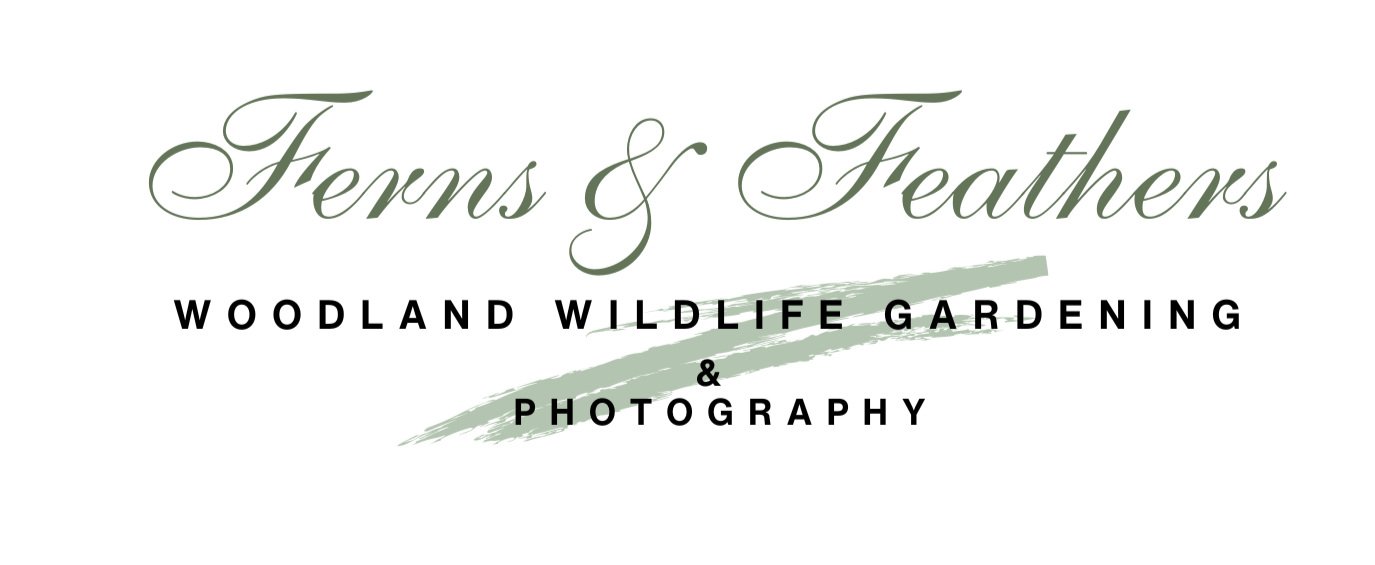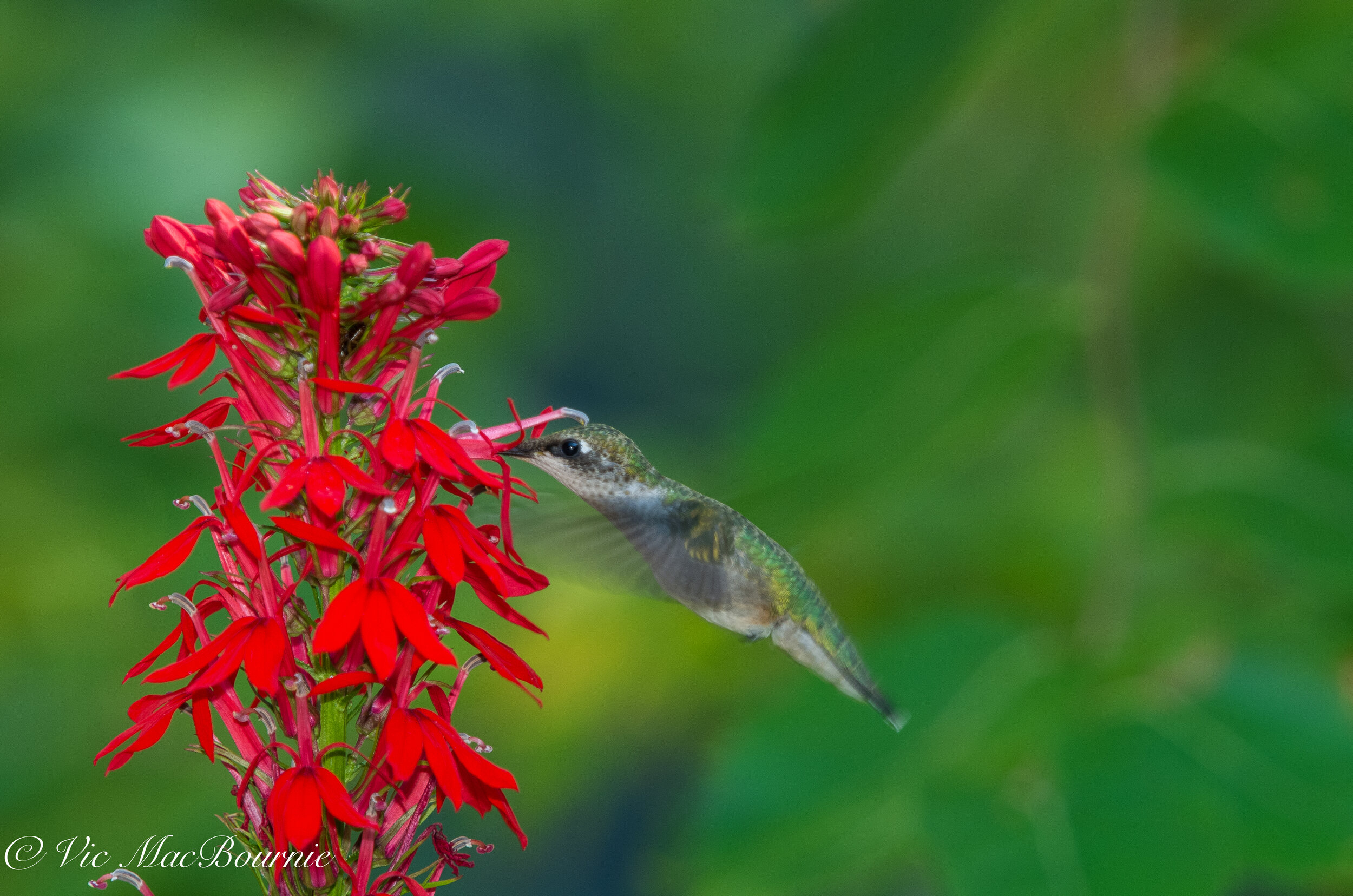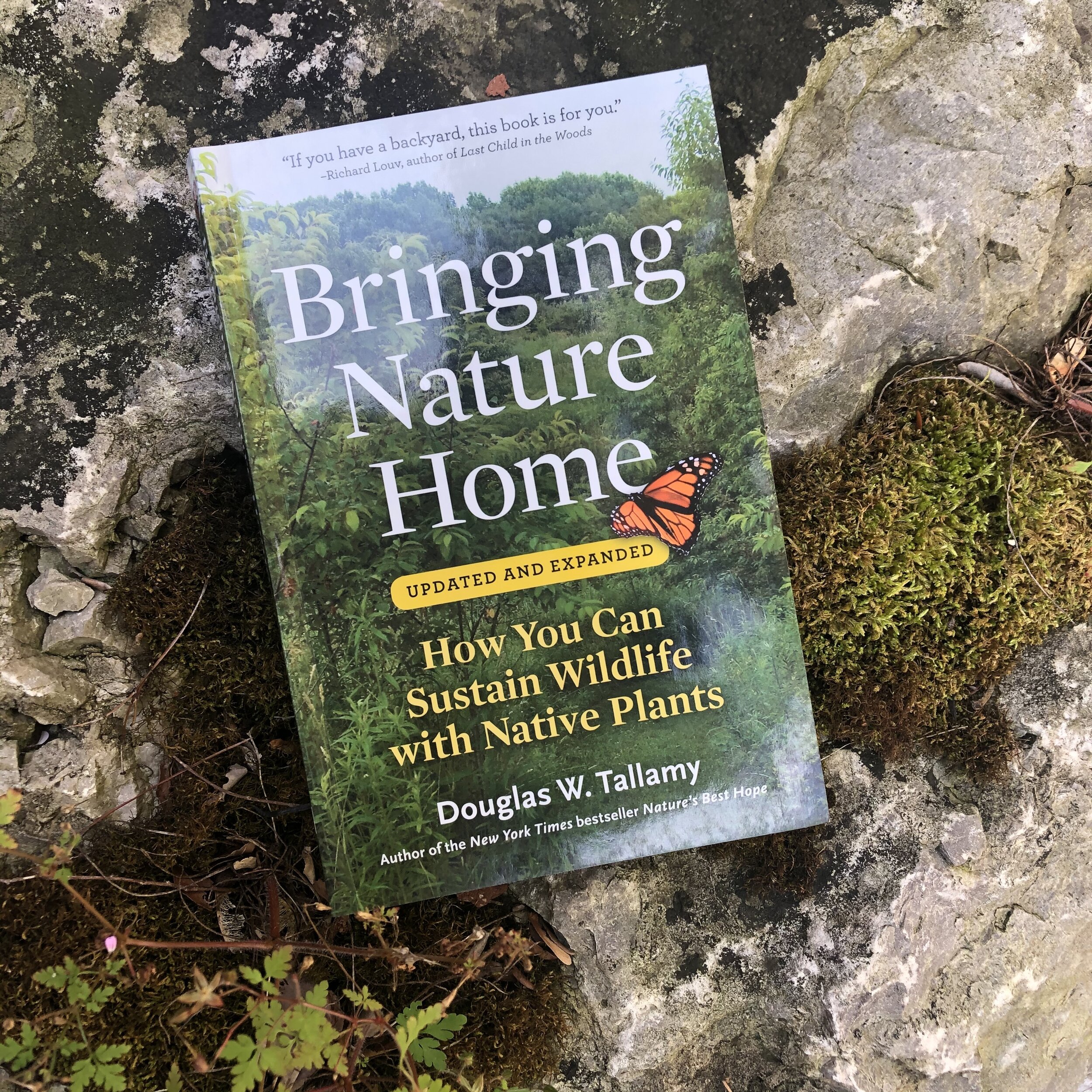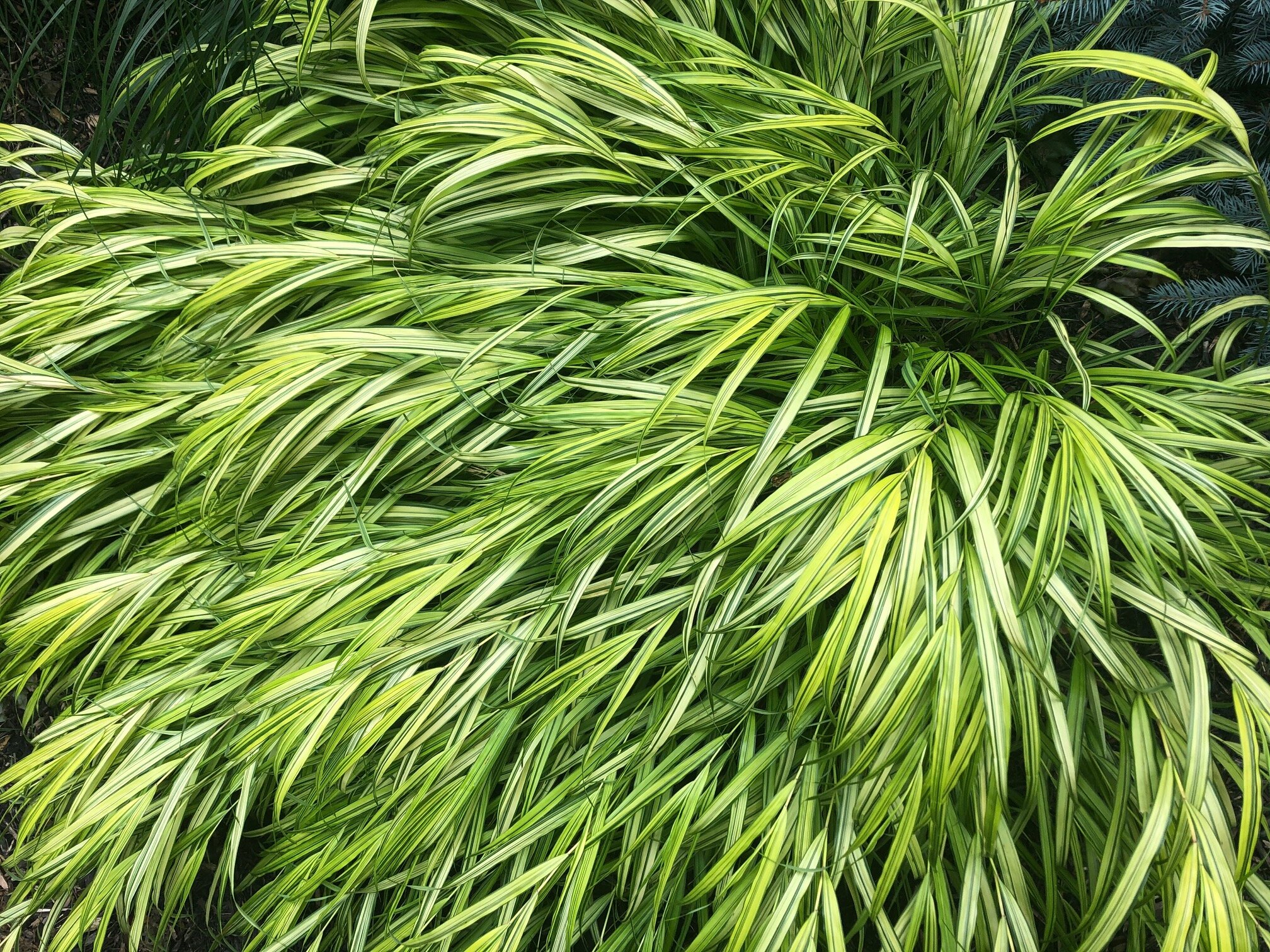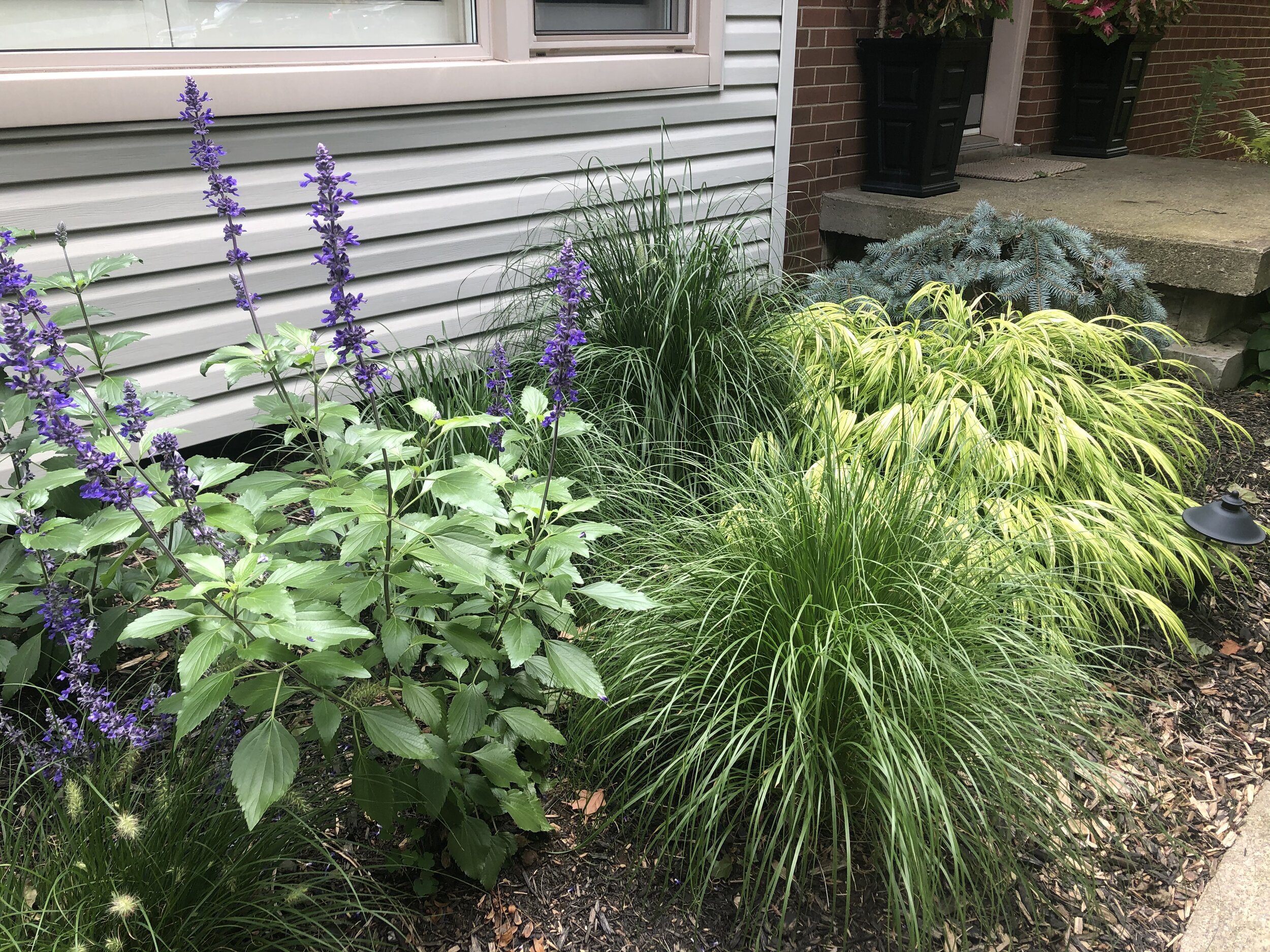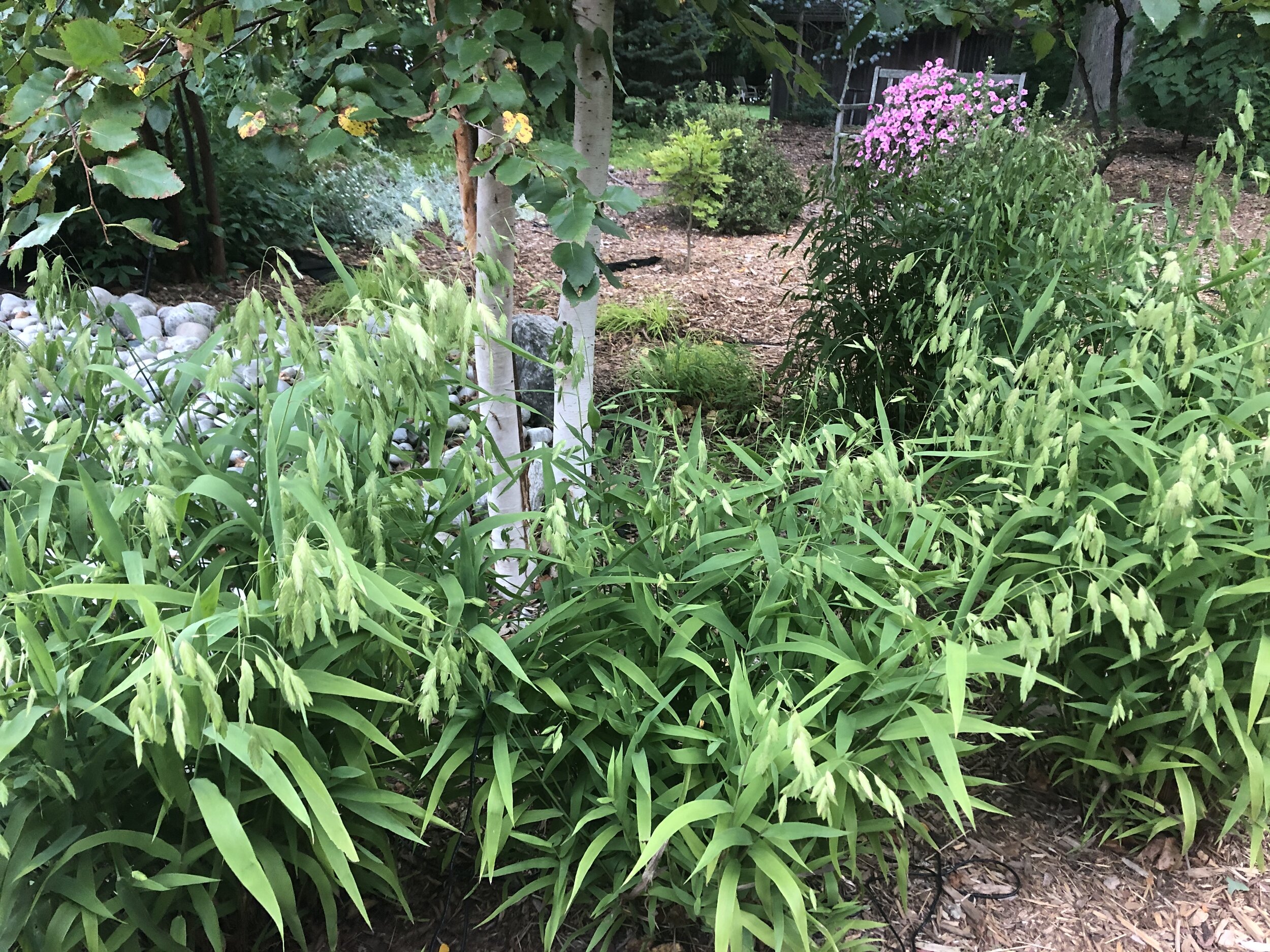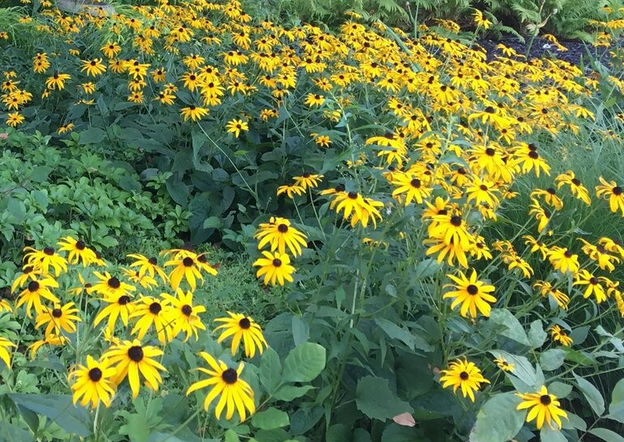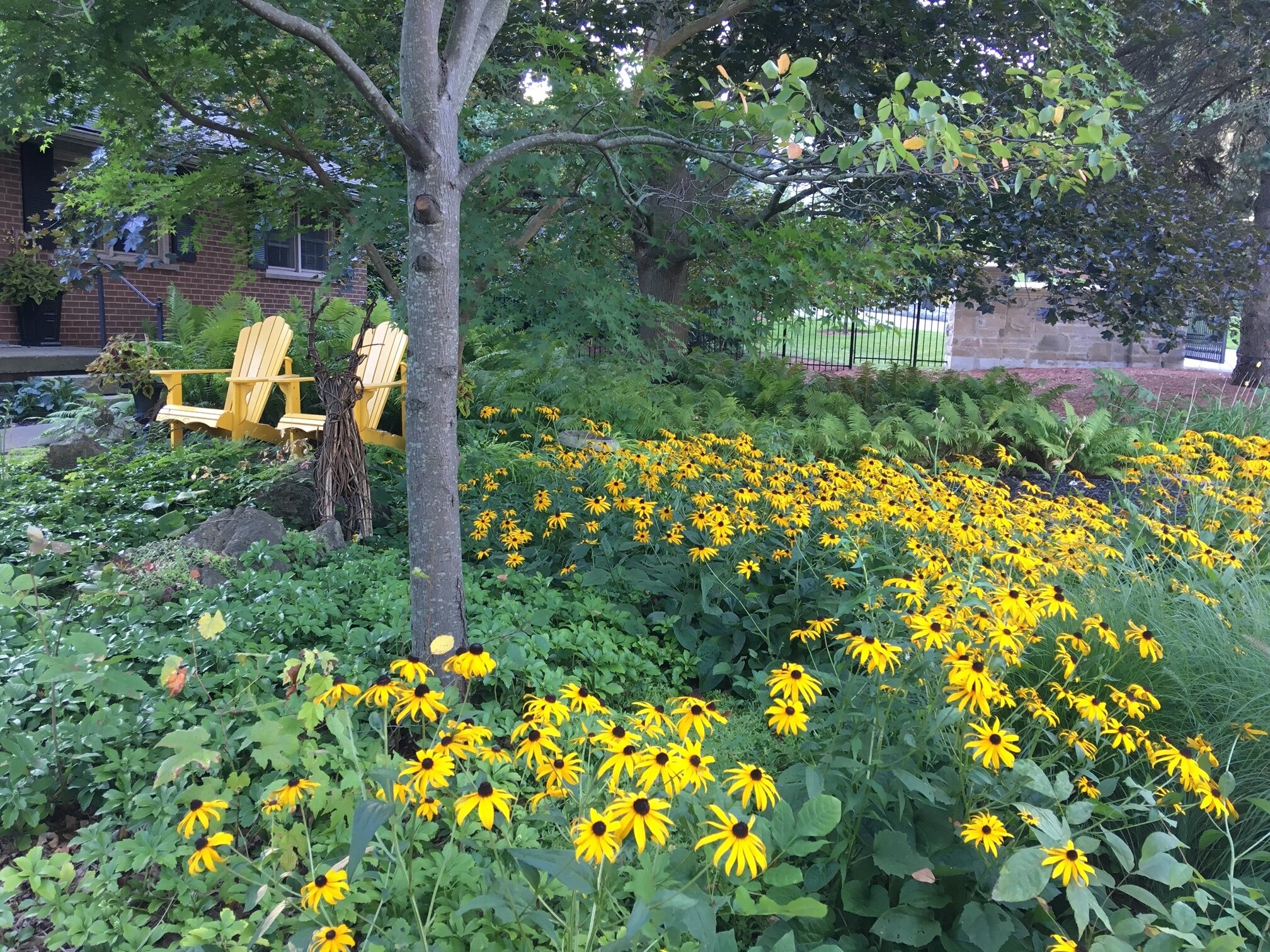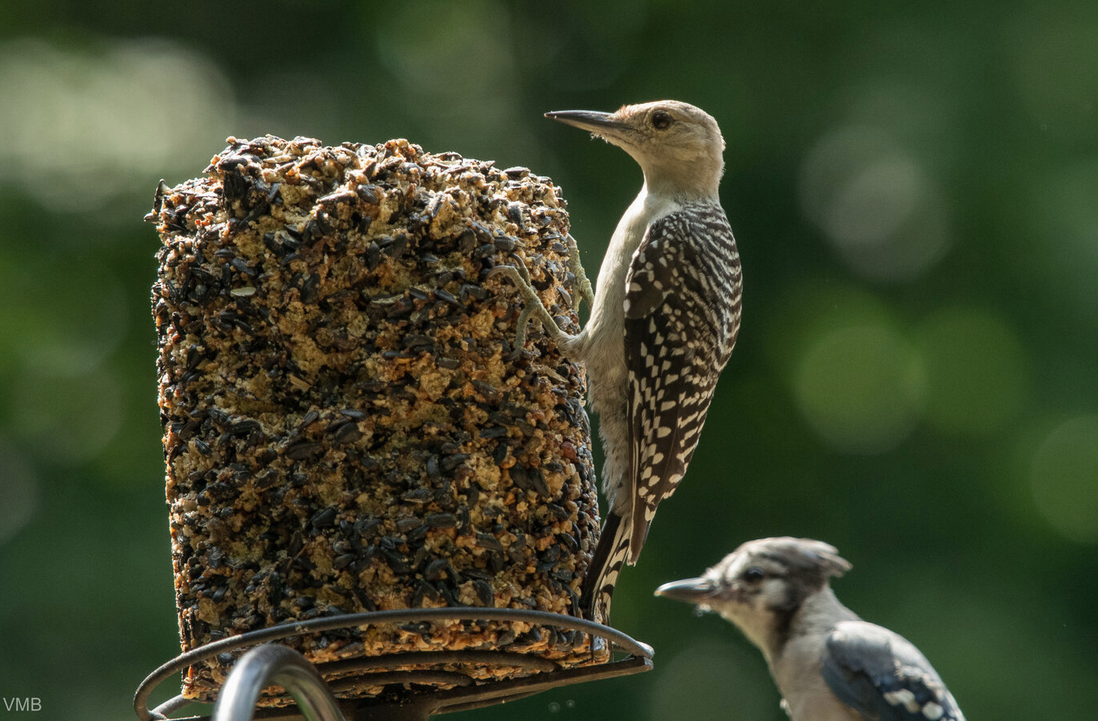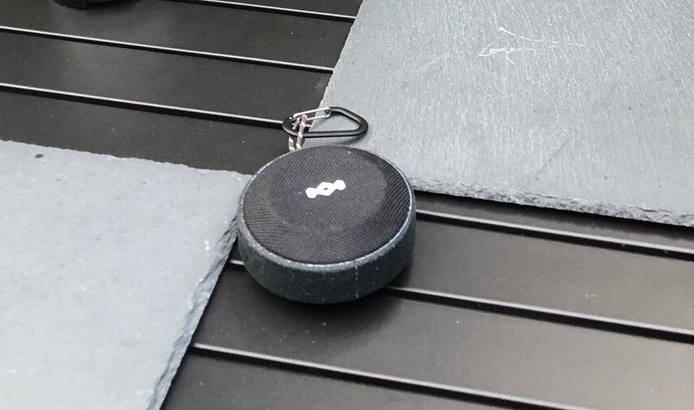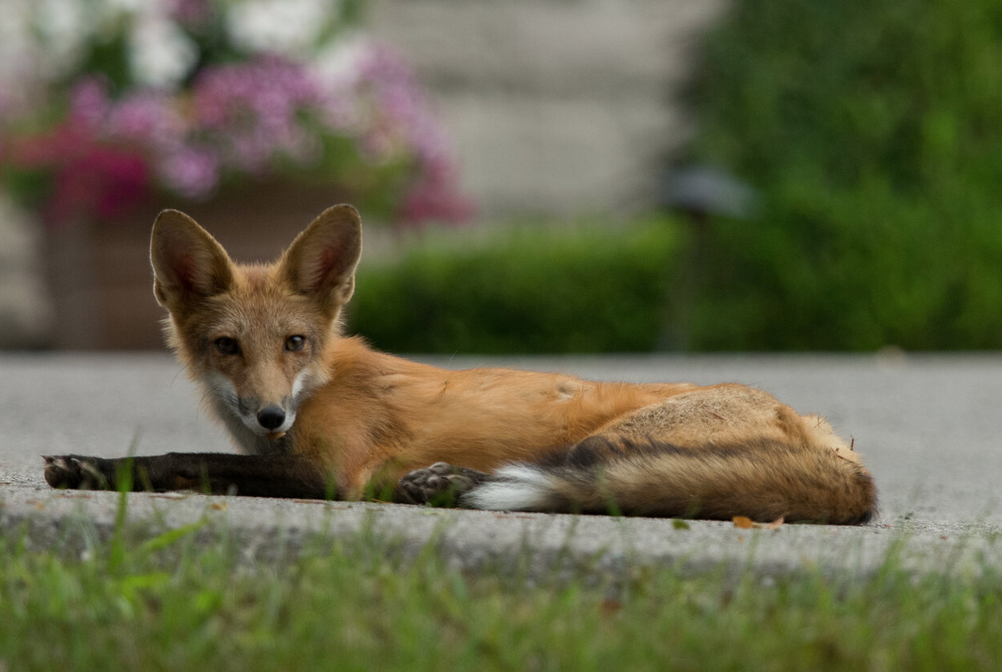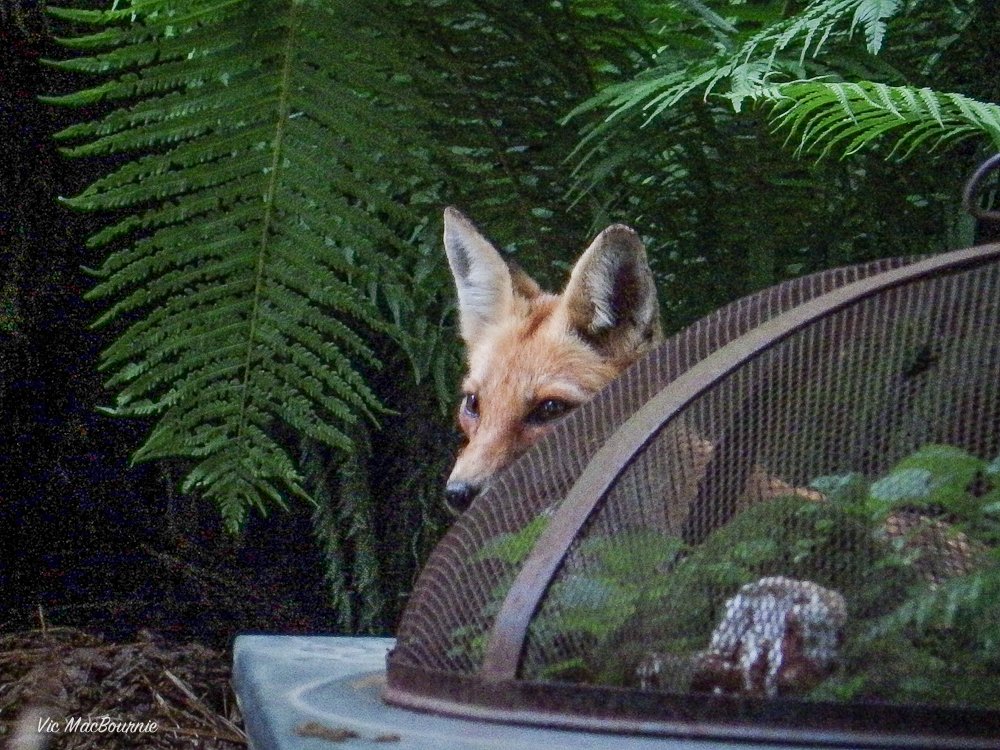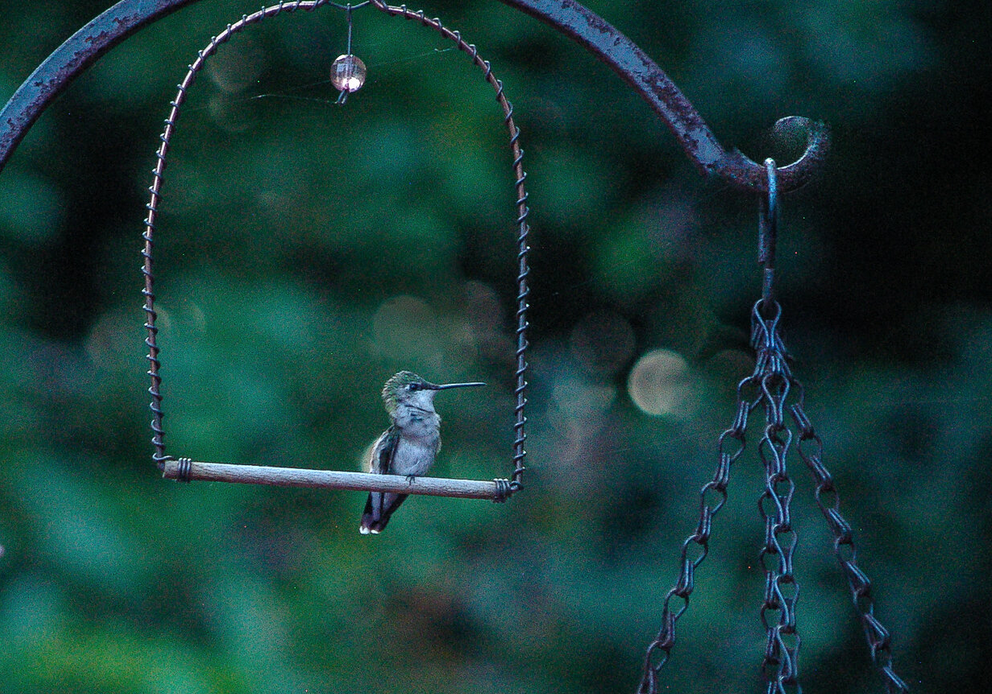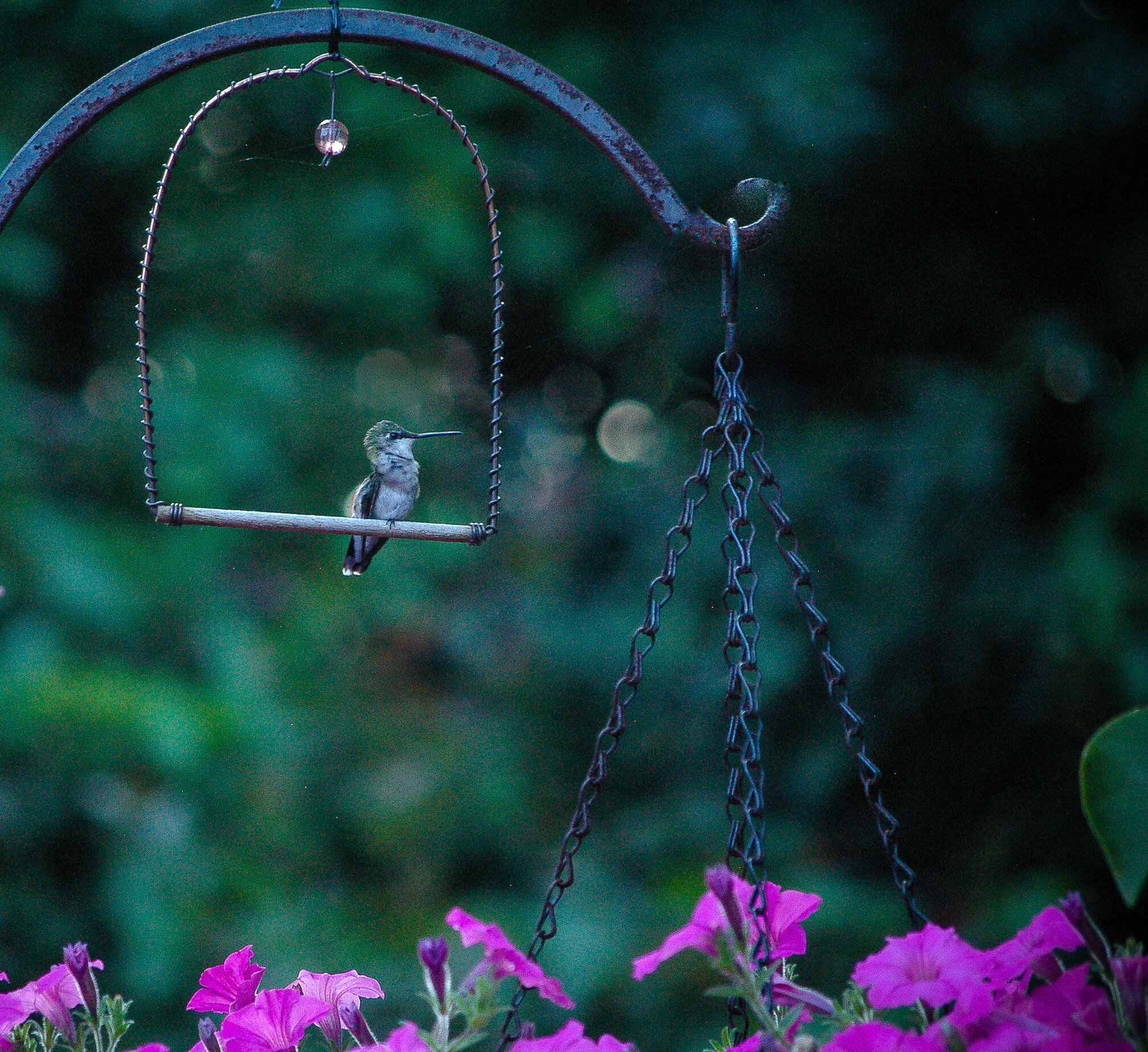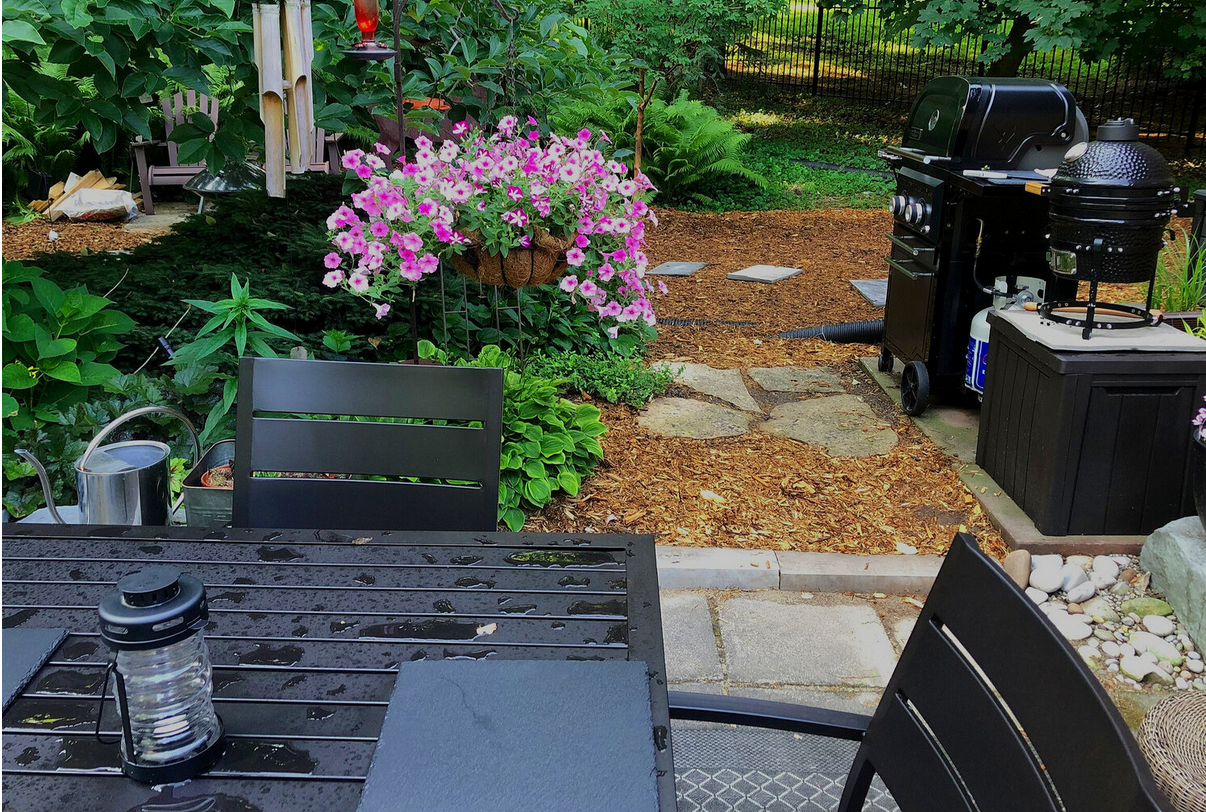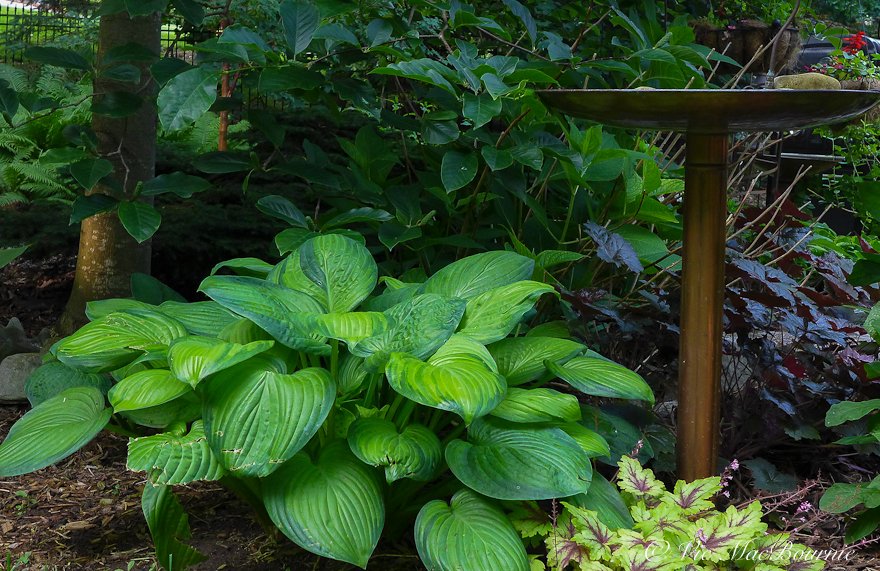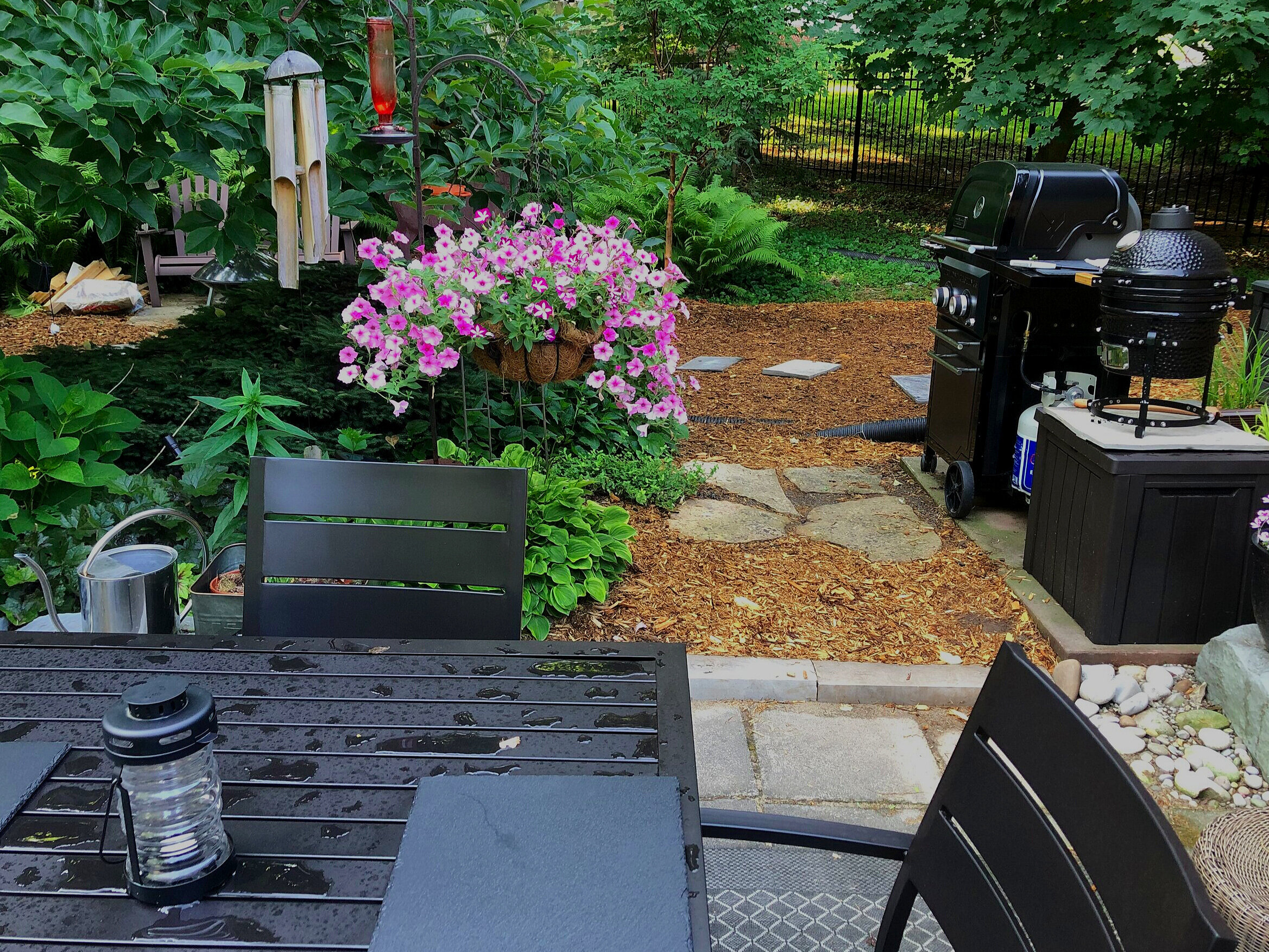Five tips to attract hummingbirds to our woodland gardens
Here are five tips to attract hummingbirds to your gardens and keep them coming back for more. Going native and eliminating insecticides in your garden will go a long way to attract these wonderful, entertaining little birds.
Going native and eliminating insecticides are key to success
Just as our hummingbirds prepare to make their arduous journey south to Central America and Mexico for the winter, I thought it was a good time to look at ways we can attract more of these favourite little entertainers back to our yards next year.
For those unable to attract hummingbirds, these tips will go a long way to bring success next year.
Depending on where you live, it can take time to get our local hummingbirds to find our yards and put it on their daily rounds for the entire summer.
Here are five ways we can attract and keep hummingbirds coming back:
Have feeders ready in early spring
1) Have your feeders cleaned and ready to go early in the spring and get them out in the garden before not after you see your first hummingbird. It’s a good idea to track the hummingbird migration on line so you can be prepared for the day they fly through your area. Hummingbirds migrate during the day when nectar sources from flowers are available. Flying low, using tail winds to help them move quickly allows hummingbirds to travel as much as 23 miles in a single day. Tracking the fast-moving band can be challenging and to some degree dependant on local circumstances such as food sources and wind direction.
A native Cardinal flower provides the perfect feeding spot for this female hummingbird.
There are many good websites that will help. Facebook groups can prove to be excellent local sources of information, but there are specific websites that make it their business to track the bands on a more global level. Hummingbirdcentral.com is one that does an excellent job tracking not just the Ruby-throated hummingbird popular in both the U.S., and most of Canada, but also the Black-chinned, Rufous, Broad-tailed, Calliope, Anna’s and Allen’s hummingbirds.
Get your feeders out early in areas of your yard that make them easy for the migrating hummingbirds to see. Rather than filling them completely with your homemade food source at 4 parts of water to one part sugar, maybe fill the feeders halfway until you begin seeing them at your feeders. Then you can fill them fully and keep them filled and cleaned regularly all summer. If you are in a colder climate, try putting a hanging basket of brightly-coloured flowers near the feeders to catch their eye. We have had hummingbirds at our front door checking out fake spring flowers on our wreath long before I realized they were back in town.
Plant both annual and perennial native flowers
2) Ensure you have plenty of annual and perennial flowers in your gardens to provide natural sources of nectar for the hummingbirds and try to have at least some in bloom as early in the spring as possible. Hummingbirds take advantage of everything from flowering shrubs, vines and understory trees to provide them with everything from food, shelter, shade and security. They rely on brightly coloured flowers to find food and are particularly attracted to red tubular flowers like the native Cardinal flower, but any brightly-coloured flower that are tubular will hold nectar. Consider planting native columbines for early spring blooms as well as bee balms, daylilies, lupines foxgloves and hollyhocks. Don’t forget to add lots of annuals that may be available in bloom in early spring if they are greenhouse grown.
Here is a short list of important flowers you should consider for your garden:
Beard tongue (Penstemon), Bee balm (Monarda), Butterfly bush (Buddleia), Catmint (Nepaeta) Clove pink (Dianthus), Columbine (Aquilegia), Corla bells (Heuchera), Daylily (Hemerocallis), Larkspur (Delphinium), Deseert candle (Yucca), Iris (Iris), Flowering tobacco (Nicotiana Alata), Foxglowve (Digitalis), Lily (Lilium), Pentas (Pentas), Petunia (Petunia), Pincushion flower (Scabiosa), Red-hot poker (kniphofia), Scarlet sage (Salvia splenens), Scarlet trumpet honeysuckle Lonicera sempervirens), Summer phlox (Phlox paniculata), Verbena (Verbena), Weigela (Weigela).
Create a shallow, reliable water source
3) Prepare a small water source early in spring to get them accustomed to using it throughout the summer. Although hummingbirds get most of their water from nectar sources both naturally and from our feeders, they do enjoy bathing in either very shallow water or, even better, in a fine mist. A gentle continuous spray from a nozzle or a sprinkler hose will get the job done. There are also commercial misters that are available. In nature, hummingbirds will use water falling from leaves during spring and summer rains to keep their feathers in top condition. A mister or gentle sprinkler spraying on leaves will create a similar situation for the birds. For more, check out my earlier post on providing water for the birds in your garden.
Give hummingbirds a place to rest
4) Provide your Hummingbirds with perches either natural ones in the form of small branches from trees and shrubs or commercially available ones designed specifically for them. Hummingbirds use perches as a base to defend their food sources, hunt insects or just as a resting spot. Males will often use the perches as a spot to vocalize in the spring to attract a mate. These branches are often very thin to accommodate the birds very small feet. If your garden lacks good landing spots, you could use thin wires, like the ones on hanging baskets. For more information on perches, check out my earlier post on hummingbird perches.
Stay away from insecticides
5) Do not use insecticides in your garden. This is probably at least as important as providing the birds with artificial feeders. Nectar provides Hummingbirds with quick energy to sustain their high energy needs, but many people might not realize that Hummingbirds depend on insects to provide them with much-needed protein and various minerals in their diets. They prey on very small flying insects, such as mosquitoes, aphids, mites, gnats, leafhoppers, flying ants and parasitic wasps.
Ultimately though, their favourite food source are spiders, specifically the daddy long legs spiders. Some estimates even have spiders representing between 60 and 80 per cent of their diet. Hummingbirds are known to use their exceptional vision to find prey, and their hovering ability and agility to capture them. Not only to they prey on spiders and other insects that get caught in their webs, Hummingbirds use spider silk that form the web to provide the foundation and glue to make nests in the breeding season.
Hummers catch insects while in flight. If you take the time to really watch your Hummers in the garden, you will notice them dashing into vegetation or flitting back and forth, flying quickly and snatching tiny insects where they swallow them whole.
if your garden is devoid of insects because you or your neighbour regularly spray it with insecticides, don’t expect to be able to maintain a healthy group of hummingbirds. In fact, if you want to encourage hummingbirds, it is important to focus on using as many native plants trees and shrubs as your garden can accommodate. For more on the importance of using natives in the garden, please check out my recent post (here) on the importance of using native plants in our garden.
• This page contains affiliate links. If you purchase a product through one of them, I will receive a commission (at no additional cost to you) I try to only endorse products I have either used, have complete confidence in, or have experience with the manufacturer. Thank you for your support. This blog would not be possible without your continued support.
Going Native: Saving nature one backyard at a time
Bringing Nature Home is a book every gardener needs to read. The book is a rich resource for woodland gardeners looking to better understand the importance of native plants in our environment and the dangers of using exotics. It is a comprehensive blueprint for how gardeners can use native plants to sustain wildlife
Bringing Nature Home: Sustaining wildlife with Native Plants
There is plenty to be optimistic about in Douglas Tallamy’s book, Bringing Nature Home and it all begins with the importance of planting native plants, trees and shrubs in our gardens.
But finding this optimism is not easy.
For my extensive article on why using native plants in your garden is important, go here.
Tallamy tells the truth and it’s a truth that will make most gardeners very uncomfortable about what we’ve planted in the past and what is now happily growing in our gardens right now.
The must-have ornamentals, the pest-resistant perennials and the trees and shrubs we probably never suspected were problematic in the landscape are creating the conditions for the slow but steady decline not only of native plants but the entire ecosystem that depend on them for survival.
Scary stuff for sure, but critical reading for anyone who cares about the environment and what awaits future generations.
Remember, I said there’s lots to be optimistic about in the book. It’s important to note that the its full title is “Bringing Nature Home. How You Can Sustain Wildlife with Native Plants.” The book proves to be a rich resource for combating the incredible damage we have inflicted on our land and the wilder places that surround us.
For more on the importance of oak trees in our garden and natural landscapes take a few moments to check out my other posts on Oak trees:
This recent book release is an updated and expanded version of the same book that was first published in 2007.
Tallamy goes to great lengths in the opening chapters to explain the enormous problems we face following the slow and steady introductions of exotic, alien plants, pests and disease brought to North America – sometimes by mistake but often through the nursery trade. The problem these exotic ornamentals bring are twofold: One, they fail to deliver the same nutritional benefits to our insects as native plants, and; Two: many of these alien plants have displaced once dominant native plants in our gardens and in the wild.
The result is devastating to a host of native insects, reptiles, animals and birds.
How we can restore native habitats
Tallamy concludes that all the points in his book converge in a common theme: “we humans have disrupted natural habitats in so many ways that the future of our nation’s biodiversity is dim unless we start to share the places in which we live – our cities and, to an even greater extent, our suburbs – with the plants and animals that evolved there. Because life is fuelled by the energy captured by the sun by plants, it will be the plants that we use in our gardens that determine what nature will be like 10, 20, and 50 years from now.”
He goes on to explain that if gardeners continue to “landscape predominantly with alien plants that are toxic to insects…. We may witness extinction on a scale that exceeds” anything ever experienced on this earth.
Tallamy recognizes that it is probably too late to turn back time and completely eliminate the alien plants either from our gardens or from wild places, but it’s not too late to use our gardens – big or small – to create islands of native-plant sanctuaries to give native fauna a chance to recover. One small island in suburbia will not solve the problem, so Tallamy encourages readers to recruit neighbours, maybe even entire neighbourhoods to transition from exotic to native plantings.
He goes into great detail to help readers recognize the benefits of using natives over exotics, even listing the best native trees and plants to use in the garden (broken down by zones). Not only does he list the trees and plants, but he includes scientific numbers on how many Lepidoptera species benefit from individual trees. For example, Oak trees rank first supporting 534 species, willows are second supporting 456, followed by Cherry/plum at 456 and birch at 413.
Tallamy speaks with great authority. He is a professor in the Department of Entomology and Wildlife Ecology at the University of Delaware, where he has authored 97 research publications and has taught insect related courses for more than 40 years. Using this knowledge, he provides valuable information on every insect and spider you might come across in the garden.
It would be easy to think this is a book for environmentalists, but it really is a book for gardeners. There are even sketches on how to use native plants in the garden to benefit our native wildlife.
For woodland gardeners, many of whom already recognize the importance of using native trees, shrubs and plants, the book helps to validate what you are already doing. For those who have not given a lot of thought to the potential damage exotics create in the environment, the book will get you to question many of your existing beliefs and garden aesthetics.
No matter where you stand, this book – not unlike Mary Reynolds’ book “The Garden Awakening: Designs to Nurture Our Land and Ourselves – will force you to rethink how you garden. Together, they form a powerful voice calling for major changes to suburban gardens away from landscapes dominated by large swaths of non-native grass and exotics, to mass planting of native trees, shrubs, plants and grasses.
It’s a voice gardeners and garden designers need to listen to, need to act on and need to convince others to act on.
Our children deserve a chance to enjoy the birds, butterflies and insects as much as we did growing up.
In addition to Mary Reynold’s book, The Garden Awakening” mentioned above, I have written a number of posts that relate to the subject of native plants. Here are just a few readers may want to explore further. Woodland Nurseries gardeners need to know about . So You Got Perfect Grass: That Don’t Impress me much.
This beautiful, 358-page soft-cover book was provided to me by the good folks at Timber Press for review. It is an outstanding resource for any gardener intent on creating a healthy backyard habitat for birds, butterflies, insects and mammals. The New York Times best seller has been praised by all who take the time to explore it. Writes The New York Tmes: “Tallamy’s message is loud and clear: gardeners could slow the rate of extinction by planting natives in their yards.”
William Cullinar, Director of Horticultural Research for the New England Wild Flower Society, writes “We all hear that insects and animals depend on plants, but in Bringing Nature Home, Douglas Tallamy presents a powerful and compelling illustration of how the choices we make as gardeners can profoundly impact the diversity of life in our yards, towns and on our planet. This important work should be required reading for anyone who ever put shovel to earth.
• If you are considering creating a meadow in your front or backyard, be sure to check out The Making of a Meadow post for a landscape designer’s take on making a meadow in her own front yard.
More links to my articles on native plants
Why picking native wildflowers is wrong
Serviceberry the perfect native tree for the garden
The Mayapple: Native plant worth exploring
Three spring native wildflowers for the garden
A western source for native plants
Native plants source in Ontario
The Eastern columbine native plant for spring
Three native understory trees for Carolinian zone gardeners
Ecological gardening and native plants
Eastern White Pine is for the birds
Native viburnums are ideal to attract birds
The Carolinian Zone in Canada and the United States
Dogwoods for the woodland wildlife garden
Bringing Nature Home by Douglas Tellamy
A little Love for the Black-Eyed Susan
Native moss in our gardens
Three of the best ornamental grasses for sun and shade
Nothing says Fall quite like the gentle swaying of late-summer grasses blowing in the gentle breezes. Gardeners looking for a more natural environment are turning to grasses to give them the architectural interest they are looking for, especially in smaller urban gardens. Here are three of my favourite, including one each for full-sun, part sun and full shade.
Japanese Forest Grass All Gold is a real winner
Nothing welcomes Fall like a beautiful late summer grass, its blooms gently blowing in the wind.
The popularity of grasses probably first set root in Wolfang Oehme and James van Sweden’s revolutionary landscape designs in the New American Garden, some 40-plus years ago. The landscape architects’ style very much celebrated the inherent textures and beauty in the tapestry of a North American meadow. At the same time, the landscape design recognized the inherent ecological, sustainable, aesthetic, and ornamental value of using grasses interlaced with a couple of strong flowering four-season performers. It was not enough for their garden designs to look good in the traditional gardening seasons, they had to be interesting in all four seasons.
Grasses, of course, play a key role in this four-season approach looking as good, if not better, in the fall and winter after the stalks dry and turn a lovely golden colour. An added bonus is the grass heads often catching the falling snow in the dead of winter.
The landscape designers’ approach focused on expansive gardens where huge swaths of ornamental grass was mass planted alongside swaths of Black-eyed Susans or Sedum Autumn Joy.
The success of the New American Garden design began to inspire more urban gardeners to consider ornamental grasses as an architectural element in their smaller, city front and back gardens. Today, it’s hard to walk through a typical neighbourhood without seeing several examples of ornamental grasses being used.
• Looking for some ideas for low-growing ornamental grasses? Be sure to check out my post on Five low-growing ornamental grasses.
Hakonechloa aurelia (Japanese Forest Grass) is an outstanding warm-summer grass that is one of the few grasses that thrives in full shade, making it perfect for the woodland garden.
If you are a little late getting in on the ornamental grass revolution, here are three very different examples I use that might be of interest to you.
Miscanthus Sinensis forms an elegant clump in our front garden.
Miscanthus Sinensis Gracillimus or Maiden Grass is certainly one of the most popular choices of this graceful upright mounding grass that stands about 4 feet high with a flowering height of an additional two feet. I use it both in the front and back gardens. In the front it acts as the perfect border to create a soft, elegant privacy screen between us and our neighbour’s driveway. Just enough to soften the hardscape, but not to much that we block one another out from a friendly conversation. In the back, two specimens stand guard on each side of a dry river bed helping to soften the edges and add some mystery to the dry-river bed.
Also known as Japanese Silver Grass, this long-lived plant (approximately 20 years) certainly stands the four-season test remaining attractive from summer through winter as it slowly changes to its light tan winter coat. The grass is native to China, Japan, South Korea and Taiwan.
The grass’s dainty plumes of pink flowers rising above the foliage from late summer into early fall, give way to violet-coloured seed heads.
Like most grasses, it’s best to leave it until spring before cutting it down. The tan grasses are too important in the winter landscape. Birds will also use the strong stalks during the winter as perching spots. The dried grasses also help to gather snow around the plant’s base providing shelter for small rodents and insects to help them overwinter in the garden.
The plant does best in full sun to partial shade and prefers moist conditions. It does well in most soil types and is highly tolerant of urban pollution making it an ideal addition to an urban environment.
Because it is not native to North America, it may be subject to certain restrictions or prohibitions on propagation.
Japanese Forest grass sits in our front border alongside a prostrate blue spruce, fountain grass and blue salvia.
Hakonechloa (Japanese Forest Grass) is an outstanding, warm season grass that adds a hit of glorious colour to shady areas of the garden.
All Gold Japanese Forest Grass is a great choice
Of particular interest is the All Gold Japanese Forest Grass (zones 5-9) that is an outstanding performer in the landscape especially when it comes into its own in late summer into early fall.
Grow it in rich, loamy soil because these grasses do not toleratepoorly drained soils that often come along with clay soils. Japanese Forest Grass All Gold also does not tolerate very dry soils. In colder climates such as zones 5-6, it’s a good idea to mulch the area with fall leaves which can be removed in spring when you cut back the foliage.
All gold like an acidic to neutral soil. Consider using Hakonechloa “All Gold” as a border plant, in containers as a spiller, or as an edging plant, in a mass planting or as a specimen plant.
Unlike the previous grass, Hakonechloa enjoys full shade where its graceful arching form lends a softness and elegance to the landscape and its yellow and green leaves are given the opportunity to really shine. It can handle part shade but will struggle to show its best colours in full sun. It’s one of the few grasses that prefers full shade and that’s reason enough to love the plant.
It never gets too high so it also works well in the front or middle of a large border. It’s also completely at home as a specimen plant all on it’s own. It is native to eastern Asia.
In our garden, Japanese Forest Grass is used primarily in the front Japanese-inspired garden where clumps of it are working to surround the front of a large Japanese Maple. Another large clump is used to soften the front porch foundation and yet more is being grown to eventually surround a small birdbath.
Japanese Forest grass, either the variegated form or the even more beautiful all-gold variety, are at home as a focal point in the woodland or tucked away in a corner to lighten up a dark area of the garden. I have seen outstanding examples of mass plantings around Japanese maples in front gardens that literally take your breath away.
These grasses are well behaved. Their dense mounds of short wide variegated blades emerge from stems in the centre of the mound and slowly spread out into large mounds that can be split to create new plants. The yellow and green leaves turn red and purple shades in the fall before turning to the familiar winter tan colour where they continue to provide interest throughout the winter.
If you are new to these grasses, don’t be surprised in the spring if you don’t see a lot of early growth. They are warm season grassed and don’t begin throwing new growth until the ground heats up in early to midsummer. Keep them well watered for best performance but they can tolerate heat and drought once they are well established.
An example of a clump of Northern Sea Oats surrounding our three birch clumps. The North American native, grown primarily for its seed heads, can easily spread if left unchecked.
Northern Sea Oats (Chasmanthium latifolium) is grown not for it’s grasses but its lovely drooping hop-like seed heads that emerge in late summer and remain on the plant through the winter. The seed heads delicately cling to the grasses and flutter in the wind adding lovely movement to the landscape.
Unfortunately, what makes this plant so sought after is also its downfall. These beautiful seed heads are known to fall to the ground and happily emerge in the spring as new plants. Now, this is great if want more and more of this North American native grass (Central and northeast United States) in your garden, but be aware before you plant it that it does have a tendency to spread. I grow ours in a heavily mulched area, so keeping it under control is not a huge task.
It’s grassy leaves are light green but turn a gorgeous coppery-bronze in the fall. This is another grass that is best cleaned up in the spring, but if you want to keep the seeds in check, feel free to gather as many of them in fall before they drop to the ground.
Northern Sea Oats grows to about 4 feet tall with a spread of about 30 inches. Its foliage extends to the base of the plant allowing it to stand alone in the landscape and you can expect a good ten years out of the plant. It’s deer resistant, makes an excellent cut flower for a fall arrangement, and it makes a good container plant that can even work as an effective thriller in a container or window box.
This tough grass prefers full sun but does well in part sun.
• This page contains affiliate links. If you purchase a product through one of them, I will receive a commission (at no additional cost to you) I try to only endorse products I have either used, have complete confidence in, or have experience with the manufacturer. Thank you for your support.
A little love for the Black-eyed Susan
As late summer approaches the Black-eyed Susans begin to come into their own with their bright cheery yellow flowers standing strong in our gardens and in our meadows. Let’s give a little love to these tough, hard-working native plants.
Black-eyed Susans are the perfect low-maintenance garden plant
You gotta love the Black-eyed Susan.
That cheery yellow with its definitive brown or black centre can bring a smile to even the non-gardener’s face, just as other plants in the garden fall victim to the dog-days of summer.
This tough, late summer native plant is as comfortable in our gardens as it is naturalized in grassy meadows.
(The importance of using native plants in our gardens is explored in great detail in my article here.)
In our garden, the hard-working Rudbeckia Hirta takes prominance in both the front, back and side gardens where I have let them naturalize and self-seed. They are just too easy and fun not to grow in our gardens.
Goldfinches depend on them for their late autumn/winter seed heads, and deer, well they pretty much leave them alone once they get past their spring tender young growth and develop their hairy leaves and stems. Butterflies and bees are attracted to Rudbeckia Hirta and the plant is a larval host to three butterflies including the gorgone and silvery checkerspot species.
What’s not to love?
Rudbeckia hirta, commonly called black-eyed Susan, is native to Eastern and Central North America. Its wide range is evident after having been found in all 10 Canadian provinces and 48 states. It’s a member of the sunflower family and a workhorse in the New American Garden along with sedum Autumn Joy and natural grasses. Although most of the plants in our gardens are likely of the perennial variety, there are biennial and annual varieties.
These are heat and drought tolerant native plant
If you are looking for a low-maintenance plant, Rudbeckia hirta is both heat and drought tolerant. It self-seeds and is able to grow in a variety of soils, but prefers a neutral soil pH and a full sun to light shade location. Deadheading, though unnecessary, will encourage more blooms and a stronger, less leggy plant.
The daisy-like flowers can be single semi-double, and fully-double. All, however, sport coarse-textured, scratchy, hairy leaves. Black-eyed Susans work well with Sedum Autumn Joy, purple coneflower and New England asters as well as many of the grasses that have become so popular in our gardens.
An important part of the New American Garden is using plants that perform in summer, fall and winter. Black-eyed Susans certainly meet that criteria. The plants have a strong winter presence in the garden, if the seed heads are left on the plants. Their dark stems give the plant architectural interest all winter and the seed heads covered in snow add a whimsical note to the winter garden.
• If you are considering creating a meadow in your front or backyard, be sure to check out The Making of a Meadow post for a landscape designer’s take on making a meadow in her own front yard.
A few rudbeckia varieties
Here are a few varieties of rudbeckia you might be interested in for your garden:
Rudbeckia fulgida var. sullivantii “Goldsturm” is the standard for Rudbeckia. It is long-blooming and virtually pest free. It grows to about 2-feet tall.
Rudbeckia “Toto Rustic” is a dwarf plant with warm fall colors. Also available is a golden “Toto” and paler “Toto Lemon.” (1 foot tall)
Rudbeckia hirta “Cherokee Sunset” has double and semi-double flowers in shades of yellow, orange, red, bronze and mahogany. It is short-lived but reseeds itself. (2 feet tall)
Rudbeckia hirta “Indian Summer” is daisy-like, with large yellow flowers. It’s short-lived, reseeds itself or it can be grown as an annual. This fella can grow to between 3 to 4 feet tall. Its perfect for the back of the border or for a real statement in the garden.
More links to my articles on native plants
Why picking native wildflowers is wrong
Serviceberry the perfect native tree for the garden
The Mayapple: Native plant worth exploring
Three spring native wildflowers for the garden
A western source for native plants
Native plants source in Ontario
The Eastern columbine native plant for spring
Three native understory trees for Carolinian zone gardeners
Ecological gardening and native plants
Eastern White Pine is for the birds
Native viburnums are ideal to attract birds
The Carolinian Zone in Canada and the United States
Dogwoods for the woodland wildlife garden
This page contains affiliate links. If you purchase a product through one of them, I will receive a commission (at no additional cost to you) I try to only endorse products I have either used, have complete confidence in, or have experience with the manufacturer. Thank you for your support. This blog would not be possible without your continued support.
Six best buys to attract birds (A few of my favourites)
When it comes to attracting backyard birds, you can never have enough feeders, birdbaths and bird houses but here are five best-buy items for backyard birders.
How to attract backyard birds with feeders, fountains and birdbaths
Backyard birders are always looking for the next best thing to attract more birds to their backyard.
A fancy new bird feeder, a ground bird bath and a few new bird houses are always welcome additions.
Here are six favourite accessories backyard bird lovers should consider: a bird feeding pole system; a seed cylinder spike; a hummingbird swing; bird bath algae remover or a good cleaning brush, a solar fountain; and high quality bird feed.
The joy birds bring and the life they add to our gardens makes buying these accessories all worthwhile.
Over the years, I’ve discovered more than a few items that have helped attract birds to the backyard and I thought I’d share some of them here with you. I’ve left out my trusty hummingbird swing that you can read about in a separate post here.
While I get great enjoyment from my bird feeding stations, providing natural food sources to our feathered friends is always the goal we should aspire to in our gardens. I have written a comprehensive post on feeding birds naturally. You can read about it here.
For more suggestions and some of my favourite garden things, be sure to check out my Favourite Things post.
1) Bird Feeding Pole System
Without a doubt my most important purchase some 20-plus years ago was a bird feeding pole system that allowed me to build a comprehensive bird feeding station over several years. It was purchased at Wild Birds Unlimited and has truly stood the test of time. Start with a simple pole, stabilizing system and squirrel baffle and add to that one element at a time depending on both the type of birds in your area and the species you want to attract. A simple pole can start as low as $22-$23 such as this one from Perky-Pet. A few dollars more will get you the Pennington Premium Feeder Pole Plus Bird Feeder System with a more heavy-duty, powder coated finish steel pole with hangers for feeders. This is a great starter kit that would allow you to put up at least three different feeders and provide feed for a wide variety of backyard birds.
A young woodpecker takes a turn at the cylinder seed feeder that sits atop our birdfeeding pole system as a blue jay waits its turn.
Moving up from there, is the Premium Bird Feeding Station Kit from yosager for under $160.00 Cdn that includes a metal suet feeder, bird bath, feeding bowl for fruits or meal worms, as well as twin top hooks to hang large bird feeders. The station also includes 5 prongs that go into the ground to stabilize the feeding station. The stabilizing bars can be important to hold the units especially if you have sandy soil. I use two large rocks on my stabilizing bars to keep the unit super stabilized.
2) The Seed Cylinder and spike accessory
Keeping with the pole system, my best accessory without a doubt has been a spike topper that has played a key roll in bringing a huge variety of birds to my feeder. Not only have the seed cylinders that fit over the spike helped to bring a variety of birds to the feeder, but the birds who do visit stay at the feeder longer working to get the seeds from the compressed feed cylinder.
Best Nest, an Ohio-based family-owned business offers a range of bird feeders including the Heath Mfg. Co. cylinder-type feeders and seed cylinders in the image above. The on-line store also offers a great assortment of seed cylinders. Check them out here, or the link above.
The Heath Mfg. Co. Stack’Ms Seed Cake Feeder has a roof to protect the pucks from rain and snow. It can hold up to 4 stack’Ms pucks allowing you to offer a wider variety of seeds. The perch at the bottom of the unit is great for smaller birds.
My seed-cylinder feeder is a simple spike that sits on top of my pole system.
3) Bird bath algae remover or a good cleaning brush
Bird baths can get gross real fast. Algae tends to get a hold of them quickly during the summer months and even if you change the water regularly, and give them a good scrubbing, it’s difficult to eliminate the algae.
That’s when you turn to one of the Algae remover microbe clarifiers that seem to work well in keeping the water clear.
A few drops once a week is usually all it takes to keep the bird baths clear. Add a few drops after cleaning the bath and then just top up the water adding the cleaner once a week or as needed.
There are several available. I have had a bottle for a number of years that continues to work despite being left outside in the shed all winter. The label is long worn off, so I can’t tell you what type it is but here are a couple that should work for you. Sanco Bird Bath & Fountain Maintenance, 100% safe for birds and wildlife and uses natural enzymes to keep the water and birdbath clean. Aquascape Clean Water Treatment used primarily for fountains, waterfalls container water gardens.
The Microbe Lift 32-Ounce Pond Bird Bath and Statuary Cleaner says it combines biodegradable resources and technology along with micro emulsion technology to safely remover organic debris and mineral deposits. It’s safe for use around birds, animals and humans and gets top ratings from users experienced with the product.
Of course a solid cleaning brush and a weekly scrubbing and daily water refresh gets the job done as well but requires us to stay on top of the situation. If you have several bird baths they can be difficult to keep clean.
4) Solar fountains
I have mentioned these before in other blogs and have to recommend them again here for their multiple uses in the garden. These small, inexpensive solar pumps can be used anywhere in the garden where you can get some sun. I use two of the smaller pumps – one as a recirculating pump in a bird bath tied to a dripper, and another in my container water garden pond to circulate the water and create a gentle fountain stream for hummingbirds to enjoy. I use a larger, more expensive unit in a bubbling rock. This unit came complete with a battery to allow me to run a small led light and the pump during the evening or on an overcast day. Both the large and small units have worked perfectly for several years.
5) Quality bird seed
Feeding the birds, squirrels, chipmunks and racoons can get expensive. Keeping squirrels and racoons off the feeder is the first step to solving the problem. The second is using a high quality feed that ensures the birds eat all the food rather than digging through it and throwing most of it on the ground. When too much food accumulates on the ground it can create a real mess and lead to unwanted rodents like mice and rats. This often leads to people new to birdfeeding deciding not to continue feeding the birds, when all they had to do was move to one of the no-mess feeds that are usually made up of high-value seeds that have already been shelled. The seed is expensive but there is no filler. The bag of seed, providing squirrels don’t have access to your feeders, will last much longer than a regular bag of assorted bird feed.
This page contains Amazon affiliate links. If you purchase a product through one of them, I will receive a commission (at no additional cost to you) I try to only endorse products I have either used, have complete confidence in, or have experience with the manufacturer. Thank you for your support. This blog would not be possible without your continued support.
One of my favourite things: A small blue-tooth speaker
These mini blue tooth speakers are the perfect way to add a little music to your garden patio whether to drown out noisy neighbours or just to enjoy your favourite tunes with a glass of wine.
The House of Marley No Bounds Blue tooth speaker is an ideal choice for a gardener to bring their favourite tunes into the yard.
Every gardener needs one of these small, waterproof blue-tooth speakers
I am passionate about two things: one is obviously gardening, the other is music.
So whenever the two can come together, I’m game.
Remember the days of running speaker wire to the backyard patio and maybe tucking a couple of old speakers under your home’s rafters. Then there was the indoor/outdoor speakers you could wire up under a pergola or some other outdoor structure. More recently we got those fancy plastic waterproof speakers that look like rocks that we can spread around the garden.
Closeup of the Marley No Bounds blue tooth speaker.
Not the best sound quality but you do what you have to do to drown out the neighbours’ annoying gas-powered leaf blower or lawnmower.
Music, like a garden fountain or some other form of moving water, can do wonders to drown out neighbourly noise in the garden. Just be sure that you are not the one creating all the noise. Just because you think Bob Dylan is the greatest, doesn’t mean your neighbours want to listen to yet another version of Blowin’ in the Wind.
One of the problems with music in the garden is that you need it loud enough to hear, but not so loud that it annoys your neighbours. Ideally, you set the volume to a level they don’t even hear.
If I’m alone in the garden, my trusty ipod with headphones or a good pair of earbuds allows me to play it as loud as I want. The Boss can be cranked and Bob Dylan can sing his heart out without annoying anyone including my wife who is, shall we say, not a big fan.
But when you don’t want to use headphones or earbuds, or you want to share your music with garden visitors, it’s hard to beat one of the many blue tooth mini-speakers that are now available at Amazon and most electronic stores.
Up until recently, I didn’t give these tiny speakers much thought. Being a little old school where bigger is always better, it was hard to take these mini wireless speakers seriously.
I mean, how good could they be?
Well, I learned quickly, they can sound pretty darn good. But it’s not just the high-quality sound that makes them so great for the garden or patio. It’s their size, portablility and the fact that you can set one down right beside you and enjoy the music while your neighbours will likely not hear a thing.
If you subscribe to one of the many music streaming services, you can go anywhere in the garden with your phone streaming to your wireless speaker. If you are streaming from a computer in the home, the limited blue-tooth range will keep you close to the source.
These small speakers act more like headphones than traditional speakers in the sense that you can place one right beside you on a table or on the arm of an adirondack chair beside the wine glass and the music is isolated to that small area. Although it may sound loud to you because the speaker is literally right beside you, the sound really does not carry very far.
I recently experimented with two of these small bluetooth speakers. Both were purchased for just a little over $50 Canadian and both delivered excellent streaming sound from my indoor computer playing itunes.
My first purchase was the Sony SRS-XB12 Extra Bass Portable speaker. This thing is small but packs quite the punch for its size. It comes in five colours: black, red, silver, blue and green, is waterproof and has up to 16 hours of battery life. Another nice feature is that you can add a second speaker that syncs up with the first for stereo sound.
The rubberized speaker is waterproof so it will survive if left out in the rain or in the path of the sprinkler. It also feels almost indestructible. The extra bass gives it a solid sound, not the least bit tinny. I spent an entire Saturday afternoon with it, listening to a variety of music and not once was I fatigued by the sound of the music.
It’s now in my daughter’s possession. She loves it for use on her Toronto Condo’s balcony and for the hotel when she travels.
The second speaker I tested is from the House of Marley (yes, that is Bob Marley’s family’s business). The No Bounds outdoor speaker is slightly larger than the Sony product and looks more like a hockey puck than the cyclindrical shape of the Sony. The Marley has a 10-hour battery, is water and dust proof, is buoyant if dropped into water and comes with a nice carabiner to clip it onto your clothing or hook it from a branch in the garden.
For environmental conscious gardeners, there are a lot of good reasons to purchase the House of Marley speaker. All of this company’s products are elegantly designed and have a very high-quality feel and look to them. For example, the speaker is:
Crafted from Marley’s exclusive Rewind Fabric, Regrind Silicone, Regrind Cork and Recyclable Aluminum.
able to wirelessly team up with another speaker to boost the listening experience and create an element of surround sound
In addition – and gardeners will appreciate this – for every speaker sold, the company says it will plant a tree.
Add to all this, a high-quality sound that captures both the highs and lows with excellent fidelity.
I have used the company’s ear buds for years with my ipod and love the sound and build quality.
In the end, I can recommend both products with great confidence. I like the House of Marley speaker’s elegant design, use of recycled material and their environmental approach to the business. The Sony is perfect for someone who is looking for a tiny speaker that packs a lot of punch for its size.
This page contains affiliate links. If you purchase a product through one of them, I will receive a commission (at no additional cost to you) I try to only endorse products I have either used, have complete confidence in, or have experience with the manufacturer. Thank you for your support. This blog would not be possible without your continued support.
Welcome the urban fox: The ultimate rodent controller
Urban foxes are common throughout North America and are important predators in the control of rodents in our woodland gardens. Here are tips to help gardeners encourage them and help them survive and prosper in our gardens.
Do fox control mice and rats?
Our first fox sighting came on Day 2 after moving to our new, old home some 22 years ago.
My daughter and I were out for a stroll in the woods surrounding our home when a fox appeared on the path right in front of us, looked at us and went on its way without a care in the world.
Not long after, a fox visited the backyard bird feeder where it scored a black squirrel pretty much on a daily basis for several weeks. Every morning at breakfast, my daughter and I would see the fox appear out of nowhere, chase down a squirrel across the yard, catch it, and with a hard shake immobilize it, before carrying it back to its den no doubt for its kits.
Needless to say our squirrel population was kept nicely in check with the Red Fox around.
While squirrel is certainly on their list of preferred food, there is no question that mice and other rodents make up a high percentage of a fox’s diets throughout the year, especially in urban areas. Studies show that urban fox feed predominantly on small mammals, particularly rodents like rats, mice and voles. Rabbits are also among their preferred food choice. Together, these can make up about 50 per cent of their diet.
Our cute little neighbourhood fox taking a rest on a driveway before an evening of hunting. July is a difficult time for fox, and it shows here in the fox’s skinny body .
Ever heard a fox scream. It’s terrifying but fascinating. For more on why foxes scream, check out my post here.
But then they pretty much disappeared for years. Foxes became rare around these parts, apparently decimated by mange.
But they’re back and I couldn’t be happier.
Not sure our local rodent population is as excited about their return as I am, however. Urban foxes help control small mammals, particularly rodents including rats, mice and voles. Squirrels and rabbits are also on the menu to a lesser degree.
This alone is reason enough for gardeners to love these little canines.
Check out my earlier articles on Why do Foxes Scream and Why Foxes steal from our gardens
We have been noticing foxes in the area again for the past two years. This winter I noticed a fox at a neighbour’s property in mid winter. It greeted my dog and I after we returned for a walk. It was in January, about the time of peak mating period. This is about the time these usually quiet little fellas become quite vocal often screaming and barking as the males roam the neighbourhood looking for partners.
When do fox begin breeding?
By February the females are pregnant and begin clearing out den sites in and around our gardens (under decks, sheds and large tree stumps).
Cubs are usually born mid-march, totally deaf, blind and in need of their mother’s constant warmth. By April the cubs emerge from their dens and start eating solid food. By May the den is an active place, especially at dawn and dusk when the parents are busy bringing the growing kits food.
This photo shows on of our neighbourhood foxes killing its prey after pouncing on it in the garden. It’s not a pretty site to watch but our gardens can be good sources of food for neighbourhood foxes.
What do foxes eat?
Foxes are actually extremely opportunistic, omnivorous predators. Besides rodents, Fox will happily feed on invertebrates, particularly various beetles, butterflies and moths as well as earthworms, grasshoppers and crickets. And those pesky garden snails and slugs are also on their menus. Spiders too, are on their list of good eats.
To a lesser degree, Fox will eat frogs and small snakes.
Birds also make up a large part of a fox’s diet, especially in the spring and early summer when foxes are feeding their hungry cubs.
Some foxes have even been known to climb trees in search of prey or fruits and nuts.
Fox kits hanging out a their roadside den.
In an urban garden, there is no doubt that bird feeders provide the perfect opportunity for a fox to easily satisfy most if its nutritional needs. Everything from rats and mice to squirrels, chipmunks and a host of birds gather around the feeder, often letting their guard down just enough to become dinner for the fox.
Being the ultimate opportunist, Fox will feed on whatever is abundant in your area. Whether that’s bugs or rats, the fox will play an important role in keeping populations in check.
Do fox eat worms?
A 1980 study showed that worms played a major role in a cub’s diet during August and September as the cubs, born in March, begin using their own hunting skills to catch worms. The study found that during some months, earthworms may account for more than 60 per cent of a fox’s calorific intake. The study estimated that it would take approximately 120 worms in a night to meet a fox’s caloric needs.
Do fox eat larger animals than mice and rats?
In other areas, hedgehogs, deer, otter, European badger, opossum, raccoon, porcupine, and even wild boar are on the menu. Fox remains have also turned up in their diets as have domestic cat, but many of these animals are expected to be the result of scavenging.
Do fox eat plants and berries?
It’s not all about meat, however. Fox will happily eat a range of plant material, especially fruits, both wild and cultivated. ( I have noticed that my blueberries are disappearing just as they begin to ripen.) Blackberries, raspberries, cherries, apples plums, grapes and even nuts are important foods for the fox as winter approaches. Studies show that fruit accounts for about 10 to 30 per cent of the diet.
And not unlike our domestic canines, grasses, sedges and various tubers find their way into the diet of most foxes.
For a more detailed look at the fox diet, go to Wildlife Online.
The main picture that accompanies this blog was taken at the end of July and it shows. At this time adult fox are often showing the strains of three months of having to provide for their growing cubs. It’s during this time that the fox begin to slow the feeding of their cubs and actually start competing for food with them. This is a dangerous time for the young foxes that are often forced to go out on their own to explore and fend for themselves.
If they survive, they begin to put on their winter coats in September and October in preparation for a long, hard winter. Male cubs leave the den area in late fall, early winter to look for their own territories.
And it all begins again.
How can the Woodland gardener help foxes?
It’s clear that providing a natural area, free of insecticides, that provides a combination of food sources including small rodents, fruit and nuts, while also providing water sources and potential den sites, is a goal all woodland gardeners should strive for. The brush pile we talked about in an earlier post becomes a hunting ground and a potential denning site for fox.
On-ground water bowls become a life-saving source of fresh water during a heat spell. Our humus-rich soil provides homes to insects and a source for earthworms. Leaving debris around the garden like branches and leaves give rodents like mice a place to live and, in return, a source of food for predators such as fox, owls and even snakes.
And, if our properties can only provide a few of these resources, we can provide a green island in a neighbourhood of green islands where a predator like the fox can exist.
We can be the ark (Acts of Restorative Kindness) that Irish landscape designer Mary Reynolds urges in her book The Garden Awakening and on her website, even if our gardens are small islands in a sea of islands.
Are hummingbird swings worth buying?
Adding a hummingbird perch close to a favourite feeder or nectar-rich plant provides the perfect resting place for hummingbirds and an ideal place to photograph the little guys when they are not flitting about.
Perch is ideal for great garden wildlife photography
I don’t know who has more fun the hummingbirds or me, but every morning it’s a swinging good time.
Me with my coffee, Holly resting on her table, and the hummers taking turns on the swing as they make their way to one of the many feeders or native plant groupings in the garden.
Do hummingbirds use store bought swings or perches?
We’ve had the swing for about three years. At first, the hummingbirds didn’t know what to think of it and pretty much left it alone. But it wasn’t long before they took to it and made it one of their favourite landing spots in the garden.
If you are only used to seeing hummingbirds hovering at flowers or a feeder with their little wings buzzing away at more than 50 beats per second, the perch will give you the opportunity to observe them up close preening their feathers and keeping a watchful eye out for competitors.
If you look closely, you might get a good look at their long tongues that they use to lick up the nectar from tubular flowers.
Perches are available at many specialty bird stores and online sources. I purchased ours from Wild Birds Unlimited, but they are also available at Veseys and Walmart as well as Amazon.
The perch is also an excellent spot to set up a camera to photograph them at rest.
Once the hummingbirds start using the perch on a regular basis, you can set a camera up on a tripod and capture some stunning images of the little guys.
Garden wildlife photography can be very rewarding, especially when you can guide the wildlife to where you want to photograph them. You don’t need specialized camera equipment once you get them comfortable landing on the swing in your vicinity.
A good compact camera with a built-in telephoto lens is all you really need. If you are interested in getting more information, check out my post on the Best camera and lens for garden wildlife photography.
Don’t be surprised if they decide the camera is a good landing spot.
For more on hummingbirds in the garden, check out the following posts:
• How to help Hummingbirds during migration
• Five tips to attract hummingbirds
• How long do hummingbirds live
• Where do hummingbirds go in winter
The swing is attached to one of our large, iron plant hooks just above a hanging container filled with Proven Winners Supertunia Vista Bubblegum and just to the right of a hummingbird feeder.
Certainly a lovely spot to go for a swing at any time of day. And if you are looking for an elegant feeder to complement the copper swing, you could do worse than this piece of garden art.
The swings can be purchased commercially or, if you are handy and up for a challenge, can be put together in an afternoon DIY project with some copper wire, beads and either a small branch or a dowel purchased from a hobby store.
Ours is made of a thick copper wire forming the main structure of the swing with a thinner copper band of wire wrapping all around the main wire. The smaller wire helps to hold the small dowel in place for the hummingbirds to sit on and twists up to the top where it holds a lovely red glass bead. I’m not sure if the bead is just for decoration or meant to attract the birds to the swing, but it’s a nice touch.
In case you didn’t know it, hummingbirds are real swingers. Researchers say that hummers spend about 80 per cent of their time perching. So a good perch that swings, is a real find for these little guys.
Now if you know anything about hummingbirds, you know they can be very territorial. Especially when there is a fresh supply of nectar.
The swing is the perfect spot to sit and rest from the enormous task of guarding the food supply, whether that is a batch of homemade nectar (4 parts boiled water to 1 part granulated sugar) or a nectar-rich flowering plant.
Don’t forget to use native flowers in your garden to attract hummingbirds. The plants offer another opportunity to photograph the birds once they begin including the native plants on their feeding routes.
We have located our swing right next to the patio where we can watch the birds on a regular basis. The more they get comfortable with you, the longer they will sit on the swing and pose for photographs.
I can’t imagine going out in the morning and not having the perch for the hummingbirds. Sure they can use a twig from a nearby tree, but providing the perfect spot for them brings them close and allows me to share my coffee time with our little garden friends.
And isn’t that why we have our gardens?
This page contains affiliate links. If you purchase a product through one of them, I will receive a commission (at no additional cost to you) I try to only endorse products I have either used, have complete confidence in, or have experience with the manufacturer. Thank you for your support.
Why do foxes steal from our garden? Fox got my Croc
Somewhere in my neighbourhood is a lost and lonely Croc. It disappeared during an overnight crime spree carried out with great stealth. Our dog saved one by her barking. I am worried about the other.
Closing in on the crime
Somewhere in my neighbourhood a lost Croc is scared, lonely and likely getting chewed on.
I rescued its sibling on a patch of parched earth in the middle of our lawn.
The saga began when I woke up, looked out back to ensure it was safe to put Holly out for the morning. Just two days earlier, she got skunked and I wasn’t going to let that happen again.
(You might want to check out my other articles on foxes: Why Foxes Scream and The urban fox and how it controls rodents like mice and rats.
In the middle of the lawn, what looked like a dead squirrel lay motionless.
Earlier, Holly had been barking at the window. I imagined the barking scared the fox who dropped the squirrel. I went outside to move the dead animal.
Young foxes like to use “toys” such as shoes and gloves to learn life skills including catching prey.
When I stepped out the back door I noticed my old Crocs were nowhere in site. I remember leaving them just outside the door after watering the garden the night before.
Barefoot, I walked out to the middle of the grass. There it sat, motionless. My old Croc, all alone in the parched grass. No doubt, left there in haste by our friendly neighbourhood fox on its regular morning visit.
This wouldn’t be the first time a fox decided to take something that was not theirs. Foxes have been known to make a habit out of stealing people’s shoes. In fact, some have even become famous for their shoe fetishes.
Take the shoe-loving foxes from a neighbourhood in Japan that pilfered 40 pairs of sandals before being nabbed in the act of the crime after a six-hour police stakeout.
This fox is hunting for mice in a grassy area of the garden.
The pair of sly foxes were discovered after police received reports of footwear mysteriously disappearing from eight households in Nagaokakyo, about 235 miles (380km) west of Tokyo.
Five police officers were involved in the stakeout that ended with the discovery of two foxes who had made their home in the garden of an empty house, with 40 pairs of shoes scattered around a burrow.
In a German town, a fox was responsible for stealing more than 100 shoes.
In England, 50 shoes were found along a path near a fox den – runners and work boots seemed to be the favourites.
So I am not alone. My Croc joins a long list of missing shoes stolen from yards while their owners slept soundly in their beds, totally unaware of the crimes happening all around them.
What makes them want to take our shoes?
From a website on foxes: “A wide range of objects can be found close by a breeding den – besides pieces of paper, plastic and bone there is an array of leathergoods like chewed shoes, gardening gloves or balls. Fox cubs have used them to play with. These “toys” are apparently presented to the young cubs by adult foxes. Later, older cubs bring them back from their own adventure tours.”
The same site describes how fox cubs use the “toys” to play with their siblings and use various “objects to train their hunting skills such as how to catch and handle their prey.”
So, some advice to my fellow gardeners: Don’t leave shoes, including your favourite Crocs or gardening gloves (especially leather ones) outside overnight. Consider putting away any other articles that you think might be a score for the neighbourhood fox.
We don’t need any more orphaned Crocs.
Be sure to check out my other articles on foxes: Why Foxes Scream and The urban fox and how it controls rodents like mice and rats.
Tips and ideas on how to de-skunk your dog
It all happened so fast. And it can happen to you and your dog if you are not careful. Here are some tips to deal with a skunking and ideas to help stop if from happening again.
Taking the stink out after getting skunked
It all happened so fast.
Holly and I go out every night at around 11 for her final pee. She loves it because she knows there’s a treat at the end. Maybe even two. Well, usually at least two.
It’s a quick in and out, no problem.
Not knowing what awaits us as we step outside, Holly is always on a leash and usually just a few steps in front of me until I’m sure the coast is cleared. The main back light is turned on to supplement the many solar lights and anything that is out there is given ample warning that we are coming out.
I guess no one told Pepe Le Pew the routine. The skunk was hiding behind a large rock on the edge of the patio probably busy digging for grubs. He was just steps from the back door. I think Holly was as surprised to see him as he was to see Holly. All I saw was Holly standing over the little guy before a flash of a black and white tail prompted me to yank the leash back and get her inside.
Then it hit me.
A skunk looking for food in the early evening.
Skunk spray is a form of sulfur. that is released in an oily form. The oil can stick to many surfaces and permeates everything it touches. Once released, the skunk smell fills the air and seeps into everything. It’s a good idea to close all exterior doors and open windows to keep the smell outdoors. The smell can even permeate skin and it’s not unusual to have the odour in your mouth and nose for a period of time. Is it any wonder that, if not treated properly, a dog can carry the smell for up to two years? Especially when its fur gets wet. Just ask a dog groomer. Most will not even take a dog that has been sprayed recently for fear of contaminating their grooming facility.
Holly’s smell was ripe and spreading through our small back landing. I called out for help. Paper towels please and plenty of them.
Be aware that skunks are particularly active in mid Feb. when you might not expect to come across them. This is their mating time and they are often seen during the evening but also during daylight hours roaming around even when there is significant snow on the ground. For more on their Valentine adventures, check out my post here.
Probably not a good idea to bring her inside immediately after getting skunked but I wanted to check her eyes. It’s important to check their eyes; if they're irritated or red, immediately flush them with cool water.
Her eyes seemed fine.
You know that skunk smell you get when you pass one that has been hit on the road, It was nothing like that…
Pungent. Not nice at all.
It wasn’t Holly’s first encounter with a skunk and it surely won’t be her last. After wiping her down as best as I could, we put her and her friend Monet (the cat) in the basement for the night. I felt sorry for both of them, but that’s all we could do at that time.
I would deal with her in the morning.
At first light I was up to take the little stinker outside. I expected the worst when I opened the door to the basement. I was greeted by the cat and dog together at the foot of the stairs. Not sure if Monet felt sorry for Holly or the smell wasn’t bad enough to keep these two buddies apart.
Turns out Holly was able to dodge a bullet. Either she sidestepped the worst the skunk had to offer or the skunk was still a baby and didn’t pack enough punch to make it stick.
Either way, the back entrance seemed to get the worst of it all. A complete cleaning with a Lysol cleaner and then swiffer wet, some scented candles and a diffuser running Refresh from Sage, and it’s liveable again.
Commercial de-skunking products such as Natures Miracle Skunk Odor Remover should probably be your first step to deal with the problem quickly.
Other highly rated products include: Van Den Heuvel’s R86 Industrial Odor Eliminator which is non-toxic and biodegradable. Not only does it eliminate just skunk odors, its combination of more than 30 different essential oils and natural ingredients, can eliminate several odours and is safe to use around children; Bodhi Dog Pet Deskunk Spray Odor Eliminator advertised as containing a combination of essential oils and useful on flat areas both in the home and outdoors; Skunk-off Liquid Soaker, a fast acting solution also useful on hard surfaces around the home; De-Skunk Odor Destroying Shampoo.
But being ill-prepared, I had to make a quick trip to the pet store for some de-skunking shampoo. After a good bath in her bottle cap pool, she’s almost as good as new.
This skunk was wandering through the garden one evening showing off its beautiful tail.
Lessons learned from dog getting skunked
First lesson: Be extremely careful when taking your dog out at night. A combination of solar lights and the back light is good, but it’s not enough in a garden where skunks can be hiding behind plants, rocks or containers. Skunks don’t run fast, so give them time to clear the area. Maybe include a powerful flashlight at the back door for a pre-surveillance before going outdoors with the dog.
Second lesson: Be prepared. There’s not much you can do at 11 pm to deal with the situation if your cupboards are bare of the essentials to de-skunk your dog, or yourself, for that matter. Get some supplies (commercial de-skunkers, old towels, distilled water, rubber gloves, a face mask), put them in a box and have them ready for the big night so the skunking repercussions can, at least, be minimized.
Third lesson: Keep the area around the back door relatively open to lessen the chance of surprising the stinky ones. Always take your dog out on a leash. Despite the leash, she still got skunked. I can’t imagine letting her out on her own. Maybe yanking her back when I saw what was happening was enough to keep the damage to a minimum.
There are several commercial de-skunking remedies available that are simple to use and provide some immediate relief from the odour.
A common DIY concoction comes highly recommended by the humane society
Mix together:
1 quart of 3-per cent hydrogen peroxide (available at most pharmacies)
1/4 cup baking soda
1 teaspoon liquid dishwashing soap preferably Dawn ( highly recommended by wildlife rescues.)
The hydrogen peroxide strips the skunk’s oil from your pet’s coat, and the baking soda helps to neutralizes the smell. Keep the formula away from your pet’s eyes, mouth, ears and nose and do not let your dog swallow any (it will cause immediately vomiting.)
Pop on some rubber gloves and wash your dog with this solution as soon as possible after they’ve been sprayed.
This DIY mixture CANNOT be stored for later use. The components in this mixture could explode if left in the bottle.
Clean and Rinse: Rub the mixture through the dog’s fur, but don’t leave it on too long (peroxide can bleach fur). Rinse thoroughly.
Shampoo: Next, wash your dog with pet shampoo preferably a de-skunk shampoo and rinse thoroughly. Towel-dry the dog and leave it in a warm dry area. Now is not the time to leave it out in the cold or in a cold garage unless there is a bed and a heater nearby. By now, the smell will be either completely gone or, at best, just slightly stinky.
Wash towels and human clothing separately in a normal wash cycle.
This page contains affiliate links. If you purchase a product through one of them, I will receive a commission (at no additional cost to you) I try to only endorse products I have either used, have complete confidence in, or have experience with the manufacturer. Thank you for your support. This blog would not be possible without your continued support.
Backyard or Garden: Putting it all together
Creating outdoor living and entertaining with a backyard woodland garden begins with proper planning, but the results can be a truly enjoyable, private space that encourages outdoor living and a truly enjoyable experience.
Open Garden Tours are an opportunity to experience beautiful gardens
I love Open Garden Tours.
They provide us with an opportunity to peek behind the back gates of some of the finest gardens in our area.
They inspire us to make our gardens better, to explore new approaches and to contemplate what we think makes a garden exceptional.
Over the years, garden tours have provided me with endless inspiration. I particularly enjoy touring gardens designed and created by homeowners rather than landscape professionals, but some of the most remarkable gardens I have experienced were created by professional landscapers.
During a tour a few years ago, I remember visiting many exceptional gardens of multi-million dollar homes. Most were created and maintained by high-end professional landscape companies.
One in particular stood out – not because of what it was, but what it could have been.
Everyone who walked through the home’s swanky front gates were excited to see what awaited us as we strolled into the back of the magnificent property.
No-one expected the disappointment that greeted us - a sea of concrete, a large pool and a small cantilevered deck overlooking a woodland. That was it. I don’t recall even a single container planted up on the stairs leading to the pool.
The owners were obviously proud of their yard. They stood outside greeting visitors who offered polite praise of the back yard pool before scampering out as quickly as possible. It didn’t help that, for comparison, most of us had just toured some of the finest gardens in the area, but it was impossible to overlook the fact that this could hardly be described as a “garden.”
I’m sure there were visitors who were impressed with the yard.
The “gardeners,” however, were aghast.
And so, the question remains: What makes a garden exceptional?
To many – these homeowners included – a backyard is a place to entertain friends and family. To others, a garden is a quiet retreat under a canopy of magnificent trees.
You may have noticed that I referred to one as a “backyard” and the other as a “garden.”
Today, as urban backyards become increasingly smaller, gardens are being replaced by yards. Large decks, patios, massive outdoor kitchens, television screens and hot tubs are competing with perennial gardens, flowering trees and shrub borders for our attention.
In most cases, the plants are losing out.
Gardens are being forced out by backyard entertainment areas in many urban neighbourhoods. Obviously, this is not a good thing. Natural corridors through neighbourhoods, so vital to mammals, birds and reptiles, are shrinking. In many new neighbourhoods we are left with mini-islands of green space not large enough to sustain any meaningful life for native fauna.
It doesn’t have to be that way. With proper planning we can have it all – a place to entertain family and friends as well as natural areas in the garden for wildlife.
Let me be bold enough to make a suggestion to new homeowners: Begin with trees, not the latest high-end BBQ.
The greatest investment you can make in your yard is a small tree that will grow into a magnificent specimen, providing privacy, shade and beauty year round. For the price of a high-end BBQ, you could purchase enough young trees, shrubs and plants to set the foundation for a lovely garden that will increase your property value ten-fold in a few short years – just about the time when you’ll have to replace that BBQ with a new model.
Unlike consumer products, trees get better with age.
I’m not saying don’t buy a BBQ, build a deck, add an overhead structure or lay a new patio. I’m just suggesting you start with a garden plan whether you draw it up yourself or sit down with a professional landscaper.
Once the bones of your garden are in place, then it’s time to look at possible entertainment areas in your yard.
Surrounding these entertainment areas with gardens provides the privacy that is so sought after in many of today’s modern subdivisions. One tree may be all you will need.
Creating the garden and privacy first will surely entice you to want to spend more time outside. Even if you think a garden is not your thing, I guarantee you the experience of eating under the limbs of a tree, it’s branches festooned with outdoor lights, will go a long way to change your mind about the need for a garden.
My wife and I recently bought into this idea big time. Given the stay-at-home world that Covid brought with it, we decided it was a good idea to invest in a little outdoor luxury. We purchased not one, but two barbecues – a small, charcoal unit and a two-burner propane unit. We also added an outdoor dining table and chairs with the expectation of staying home all summer and enjoying our garden in the midst of the pandemic.
It’s already proven to be a great investment. Dining outside couldn’t be more enjoyable. French toast for breakfast on the griddle of our new Vermont Castings propane barbecue, and outstanding chicken wings from the grill of our mini Louisiana Kamado-style grill has made restaurants and take-out a thing of the past. We have a summer of new recipes ahead just waiting to sample.
Spending time outdoors couldn’t be more enjoyable. There is something very relaxing about watching nestlings take their first flights while chipmunks chase one another around your table during morning coffee.
The yard and garden coming together as one. That’s a goal we need to work toward. That just may be the recipe for happiness.
